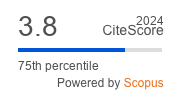Article | Open Access
‘Sensor’ship and Spatial Data Quality
| Views: | 3602 | | | Downloads: | 1978 |
Abstract: This article describes a Los Angeles-based website that collects volunteered geographic information (VGI) on outdoor advertising using the Google Street View interface. The Billboard Map website was designed to help the city regulate signage. The Los Angeles landscape is thick with advertising, and the city efforts to count total of signs has been stymied by litigation and political pressure. Because outdoor advertising is designed to be seen, the community collectively knows how many and where signs exist. As such, outdoor advertising is a perfect subject for VGI. This paper analyzes the Los Angeles community's entries in the Billboard Map website both quantitatively and qualitatively. I find that members of the public are well able to map outdoor advertisements, successfully employing the Google Street View interface to pinpoint sign locations. However, the community proved unaware of the regulatory distinctions between types of signs, mapping many more signs than those the city technically designates as billboards. Though these findings might suggest spatial data quality issues in the use of VGI for municipal record-keeping, I argue that the Billboard Map teaches an important lesson about how the public's conceptualization of the urban landscape differs from that envisioned by city planners. In particular, I argue that community members see the landscape of advertising holistically, while city agents treat the landscape as a collection of individual categories. This is important because, while Los Angeles recently banned new off-site signs, it continues to approve similar signs under new planning categories, with more in the works.
Keywords: categorization; landscape; outdoor advertising; spatial data quality; VGI
Published:
© Elisabeth Sedano. This is an open access article distributed under the terms of the Creative Commons Attribution 4.0 license (http://creativecommons.org/licenses/by/4.0), which permits any use, distribution, and reproduction of the work without further permission provided the original author(s) and source are credited.


